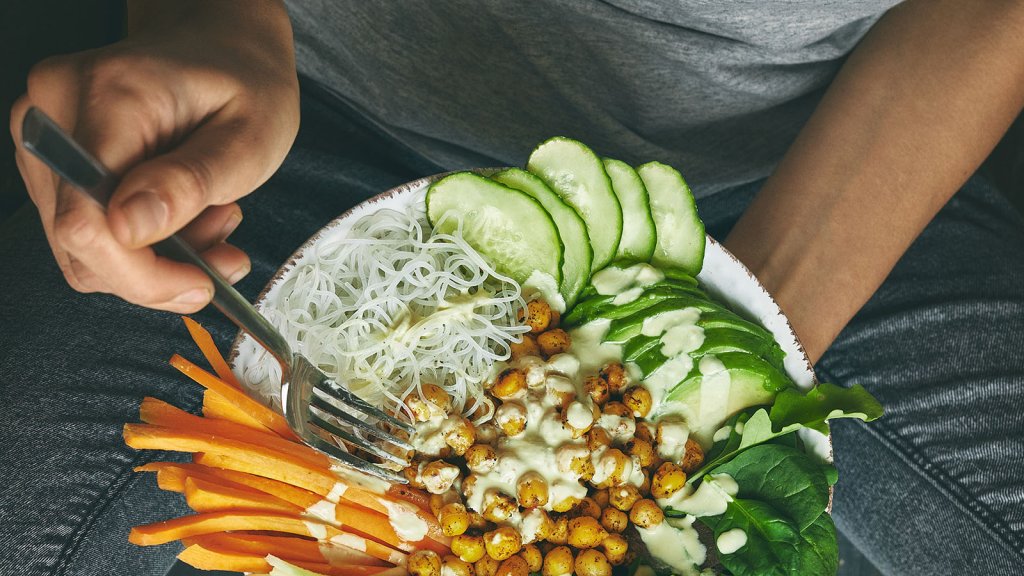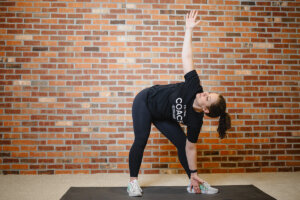Think you’ve got what it takes? Here at Anytime Fitness, we’re constantly thinking up new ways to encourage our members to keep reaching for their fitness goals, whether that means losing weight, gaining muscle or just feeling better in your body. This time around, we want to see if you have what it takes to complete our 30-day clean eating challenge. But why clean eating? And why 30 days? And what does clean eating even mean?
Nutrition is vital to your fitness goals
Before we get to all that, we want you to remember this: Nutrition and fitness go together like all-natural peanut butter and jam. While increased activity through exercise will accelerate your fitness journey, you can’t out-exercise poor nutrition.
Nutrition accounts for 80% of any fitness goal, with the other 20% coming from your genetics and exercise regimen. When you start giving your body the fuel it needs to perform properly, the fat that no longer needs to be stored is let go, allowing your muscles to shine through. Clean eating is a great way to make sure you’re getting the right nutrients needed to fuel your body.
What is clean eating?
Let us start what it’s not: Clean eating is not a diet. It does not involve omitting foods or counting calories, and it most definitely doesn’t focus on starving yourself. Whether your fitness goal is to pack on muscle or lose a few pounds, any fitness goal is going to require extra effort in the kitchen. Fortunately, clean eating doesn’t necessarily require a full meal plan and prep system.
Clean eating is a lifestyle trend made popular by health and wellness advocate Tosca Reno when, at age 40, she transformed her body — and consequently her life. Her Eat-Clean Diet® centers around eating clean foods: Foods that are minimally processed and lack artificial ingredients like added chemicals, sugars, and preservatives. Essentially, you’re cutting out anything fake and sticking to grown-from-the-ground nutrients.
Once you switch to eating clean for all your meals, your grocery list will start to look a lot different. The convenience-friendly, processed foods will shrink away and your fridge and pantry will be packed with raw, whole foods like colorful fruits and veggies, lean proteins like chicken, and healthy fats like olive oil. You can call it a clean eating diet, but don’t think of it in the restrictive sense. Eating clean doesn’t mean cutting calories. Clean-eaters can fill their mealtimes with simple ingredients and healthy dishes.
Is this the Whole30 diet?
While Whole30 is also a 30-day challenge, the Whole30 diet is far more restrictive. The Whole30 program prescribes eliminating sugar, alcohol, grains, legumes, soy, and dairy products. This 30-day clean eating challenge involves replacing highly processed foods with whole foods. Think swapping fresh fruits for fruit juice, Greek yogurt for sour cream, maple syrup for white sugar or healthy oils for refined ones. While both Whole30 and clean eating aim to add more real food to your meal plan and cut out added sugar, Whole30 cuts out more from the traditional plate.
Clean eating is different from the paleo diet and ketogenic diet as well. For starters, it’s in the very name – clean eating is NOT a diet! While there’s lots of information to be found on these diets, they can also be pretty restrictive. However, with clean eating, you can eat as much food as you want, so long as that food is non-artificial and is low in added ingredients and refined sugar.
Why 30 days?
Many of us have heard that it takes a minimum of 21 days of consistency to form a new habit. While this theory has been largely debunked, what is true is that making a habit requires willpower and continual effort. We use the 30-day challenge template as a challenging but achievable goal to help you get motivated to reach your health goals. The 30-day timeframe allows you to focus on small, week-by-week changes, ensuring you have time to build the habit. The best time to start a clean eating diet? Right now.
What can I expect to happen in 30 days?
The short answer is: A lot! Many who give clean eating a try for 30 days will see a change in their weight, however the benefits of clean eating far surpass the number on the scale. For example you might experience:
- Less bloating
- Less joint swelling
- Clearer skin
- Fewer mood swings
- Less stomach pain or indigestion
- Less heartburn
- Reduced body aches and pains
- Improved attention span
- More restful sleep
- Higher energy levels
It’s been shown that eating artificial, highly processed foods can increase your risk for obesity, heart disease, type 2 diabetes, and other health problems; swapping these foods for ones closer to their natural state can help you avoid those problems. Even just 30 days of clean eating can help you learn helpful habits that will promote a more intentional approach to fueling your body.
Challenge: 30 Days of Clean Eating
This 30-day clean eating challenge helps you incorporate more real food into your everyday diet. Clean eating allows you to keep the foods you love through exploring healthier ways to enjoy them. When you follow a clean eating meal plan, you can still enjoy your favorites like ice cream and red wine, as long as they’re enjoyed in moderation and made from natural ingredients. The bottom line about clean eating is this: It’s not a diet, it’s a lifestyle, and that lifestyle is all about enjoying food in its most natural forms.
If all this talk of whole foods and lifestyle changes has you feeling overwhelmed, take a breath and relax. At its core, the clean-eating lifestyle is a basic method of eating. Over time, and with practice, eating clean will be second nature to you. Follow these guidelines for the next 30 days, and remember that the best way to form a habit is to take it day by day.
The principles of clean eating
Making healthy food choices can transform your body from the inside out. Give it a try for 30 days, sticking to the following guidelines:
- Eat 5-6 meals small meals a day
- Eat every 2-3 hours
- Combine lean protein and complex carbs at every meal
- Drink at least 2 liters (8 cups) of water a day
- Keep clean foods nearby at all times to avoid skipping meals
- Avoid overly-processed and refined foods such as white flour or sugar
- Avoid saturated and trans fats
- Avoid sugar-loaded drinks, such as soda and juice
- Try not to go overboard on the healthy fats
- Avoid alcohol, which is a source of sugar
- Avoid foods dense in calories but low on nutritional value
- Keep your portions small; no more supersizing
Serving sizes and schedule
Follow these portion and serving recommendations for a balanced clean-eating diet:
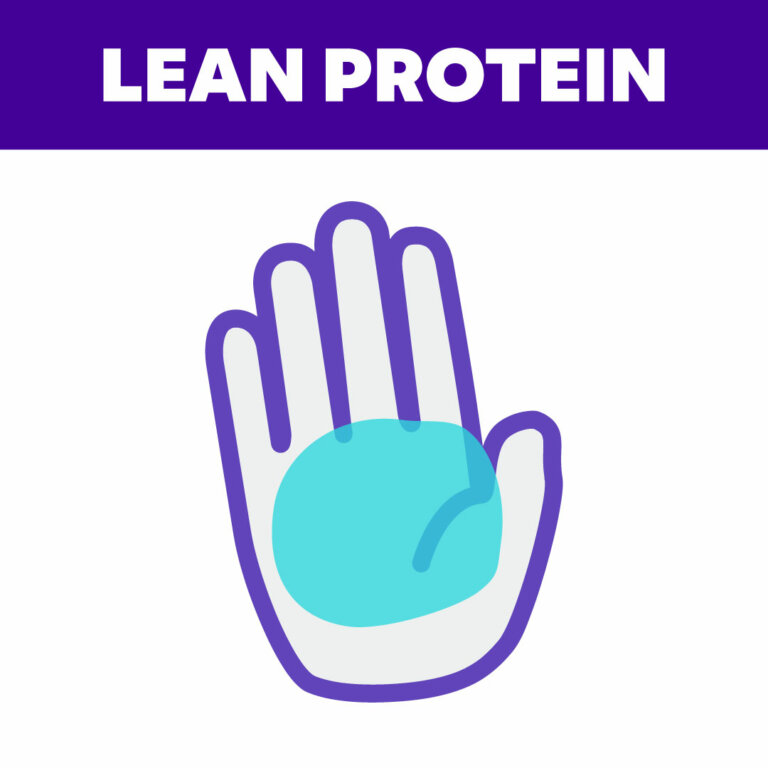
- 6 servings daily
- Palm of hand
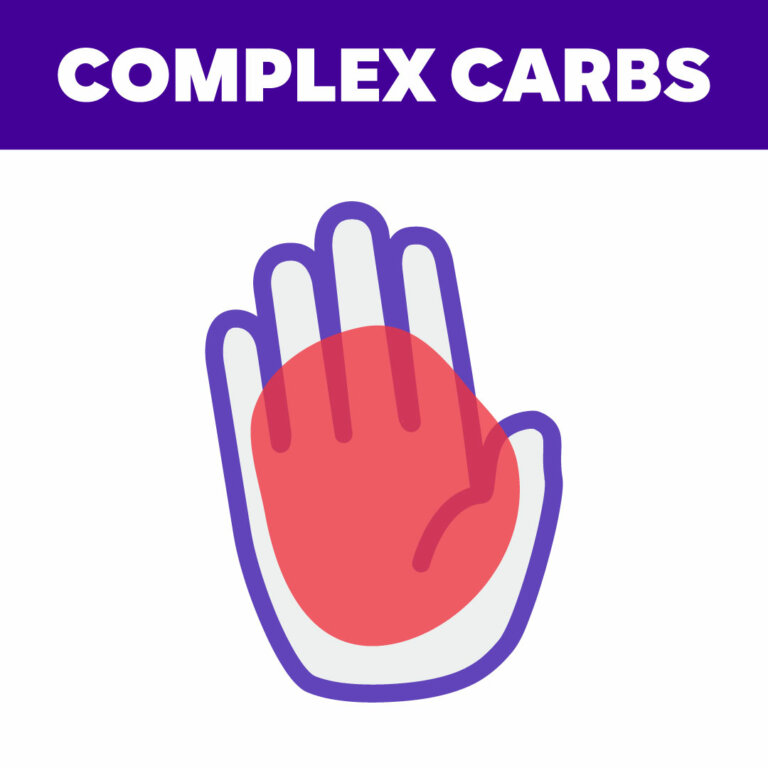
- 2-4 servings daily
- Cupped hand

- 4-6 servings daily
- 2 cupped hands
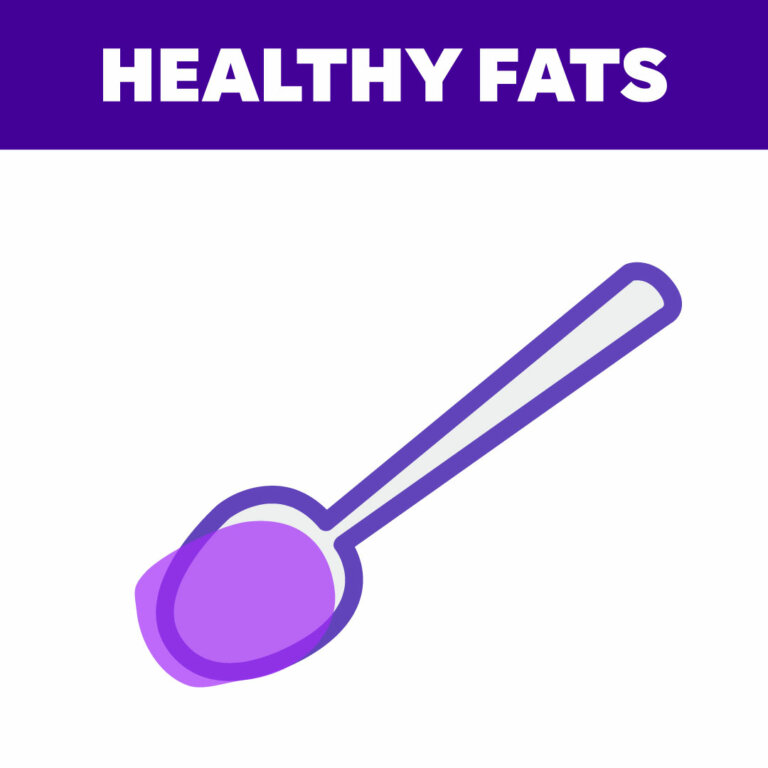
- 2-3 servings daily
- 2 tablespoons
Tips for sticking to a clean-eating diet
Now that you know what clean eating is about, here’s how to incorporate it into your everyday diet.
1. Know the rules
Bookmark this page, take a screenshot or print this article out to stick on your fridge — whatever you have to do, keep a copy of the guidelines in a visible, easily-accessible place so you can keep your promise of making good choices. Clean eating can seem complicated when you first start out, so having a reference is especially helpful for those first few weeks.
2. Take baby steps
You can’t expect to completely revamp your diet and instantly follow it. Smaller, more gradual changes are gold; they’re much easier to sustain, allowing your lifestyle to slowly shift into this long-term routine. Start your clean eating journey by making little changes every day. Replace soda or coffee for a homemade smoothie, mayo for avocado slices, or beef for chicken. A great place to start is with your carb intake. Sweet potatoes are a delicious and nutrient-dense alternative to white potatoes, and whole-grain bread is a better choice than white bread. You can also try swapping white rice for brown rice, wild rice or even quinoa. Over time, the small changes will evolve into something great.
3. Only eat it if you can pronounce it
The goal of a clean eating meal plan is to rid our bodies of preservatives, chemicals, artificial colors, and all the other icky fillers found in processed foods. When sticking to a clean-eating diet, you have to read the ingredient list on EVERYTHING. Start at home in your pantry. If there’s stuff on those nutrition labels that seem foreign or are hard to pronounce, they probably don’t belong in your body. To put the natural vs. unnatural food question into perspective, some clean eaters like to consider whether or not their grandmother would be familiar with the ingredient. A lot of unknown words on an ingredient list can often be code for sugars, chemicals, additives, and trans fats. Be diligent: Those sugars and additives can hide in foods that sound healthy and natural, like fruit juice. It’s also best to stick to ingredient lists that only have about five or six items, which are more likely to have simple ingredients.
4. Make a plan and stick to it
It’s amazing how a little planning and accountability can influence day-to-day decision making and impact end results. It will be easier to stick with your plan if you’re prepared with healthy foods at an arm’s reach.. When you bring a load of groceries into your home, set aside some time to prepare foods, such as pre-cutting vegetables or washing berries. The vending machines at work are packed with sugar, but won’t be as tempting when you can reach for the healthy snack waiting for you at your desk. And if you’re having trouble keeping yourself accountable, consider tracking your meals — it’s the easiest way to see progress.
5. Make use of your resources
Clean eating has grown in popularity over the last few years, making it even easier to find recipes, snacks, meal plans and tips. There are bloggers out there who have dedicated their entire site to clean eating, and a quick internet search can help you find healthy solutions for your usual go-tos. Once you get comfortable with the simple clean eating principles, start exploring and you’ll find yourself making up recipes of your own.
6. Treat, don’t cheat
We mentioned this was a lifestyle, right? Many times when we begin a new diet, we restrict way too much, and that’s simply not sustainable. Let’s be honest, food can be highly emotional, but the goal of clean eating is not to fill you with guilt, even if you indulge. Planning for treats in your diet is much kinder to yourself than shame-eating your favorite foods and then feeling like you’ve wrecked your progress. When starting out on your clean-eating journey, aim to eat clean 80% of the time;. leave that other 20% for a slice of your favorite dessert or your mom’s lasagna with extra cheese. Even if you do fall off the wagon, don’t beat yourself up! Accept the reality and get back up on that horse — you got this!
Find healthy dinner inspiration in this round-up of quick dinners to add to your weeknight rotation.
